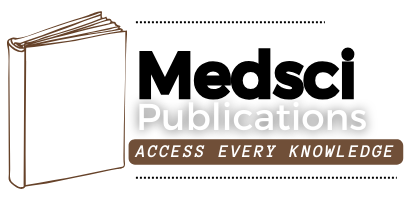A Study on Socio-Demographic and Clinical Profile of Patients on Second Line Anti-Retroviral Therapy Registered at ART Centre in Surat City
DOI:
https://doi.org/10.55489/njmr.150220251102Keywords:
Socio-Demographic Profile, Clinical Profile, Second Line Anti-Retroviral Therapy, ART Centre, HIVAbstract
Background: There is a need to develop concrete data in India about the number of people who need to switch to second-line HIV drugs and widespread emergence of drug resistance threatens the sustainability of the national programme. This study was conducted to study on Socio-Demographic and Clinical Profile of Patients on Second Line Anti-Retroviral Therapy Registered at ART Centre in Surat City.
Methodology: The present study was a Cross-sectional study conducted at the ART centre of Gujarat, which are providing free second line ART. The study was conducted by pretested semi-structured questionnaire. The information regarding socio-demography and clinical variables, treatment and sexual activity were taken by oral interview of patients. While information regarding laboratory profile, adherence and treatment history were taken from patient treatment cards.
Results: Most common reason for switch to second line ART was virological failure (84.2%). Mean duration of first line ART treatment was 30.15 (S.D. 25.350) months. All patients were given ritonavir boosted PI. Majority (66.7%) were given Atazinavir-ritonavir boosted PI and around 30% had history of substitution within second line ART.
Conclusion: On the basis of our findings, we conclude that early detection of first-line treatment failure and improve availability/affordability of second-line regimens should become priorities in National Programme. First line ART patients with history of tuberculosis following ART initiation, treatment interruptions, treatment from private facility, belonging to nuclear family and lower social-economic class should be watched for ART failure.
References
1. National AIDS Control Organization (2012). Department of AIDS Control, Ministry of Health and Family Welfare, Government of India, New Delhi. Annual Report 2011-2012.
2. Edward J Mills, William A Schabas, Jimmy Volmink, Roderick WalkeR et al.Should active recruitment of health workers from sub-Saharan Africa be viewed as a crime? The Lancet 2008, Volume 371, Issue 9613, Pages 685-688. DOI: https://doi.org/10.1016/S0140-6736(08)60308-6 PMid:18295027 DOI: https://doi.org/10.1016/S0140-6736(08)60308-6
3. Bhaskaran K, Hamouda O, Sannes M, Boufassa F, Johnson AM, Lambert PC, Porter K; CASCADE Collaboration. Changes in the risk of death after HIV seroconversion compared with mortality in the general population. JAMA. 2008 Jul 2;300(1):51-9. DOI: https://doi.org/10.1001/jama.300.1.51 PMid:18594040 DOI: https://doi.org/10.1001/jama.300.1.51
4. Hamers, R., Wallis, C., Kityo, C., Siwale, M., Mandaliya, K., Conradie, F., Botes, M., Wellington C. HIV-1 drug resistance in antiretroviral-naive individuals in sub-Saharan Africa after rollout of antiretroviral therapy: a multicentre observational study. Lancet Infect Dis, 2011; 11: 750-59. DOI: https://doi.org/10.1016/S1473-3099(11)70149-9 PMid:21802367 DOI: https://doi.org/10.1016/S1473-3099(11)70149-9
5. Renaud-Théry F, Duncombe C, Kerr S, Thierry S, Perriëns J, editors. Adult antiretroviral therapy in resource limited settings: a systematic review of first-line failure and attrition rates. 17th Conference on Retroviruses and Opportunistic Infections; 2010; San Francisco.
6. Keiser, O., Tweya, H., Braitstein, P., Dabis, F., Phail, P., Boulle, A., Nash, D., Wood, R., Luthi, R., Martin, B., Schechter, M., Egger, M. Mortality after failure of antiretroviral therapy in sub-Saharan Africa. Trop Med Int Health 2010; 15(2): 251-258. DOI: https://doi.org/10.1111/j.1365-3156.2009.02445.x PMid:20003034 PMCid:PMC2873139 DOI: https://doi.org/10.1111/j.1365-3156.2009.02445.x
7. Ahoua, L., Guenther, G., Pinoges, L. et al. Risk factors for virological failure and subtherapeutic antiretroviral drug concentrations in HIV-positive adults treated in rural North-Western Uganda. BMC Infectious Diseases 2009; 9:81. DOI: https://doi.org/10.1186/1471-2334-9-81 PMid:19493344 PMCid:PMC2701435 DOI: https://doi.org/10.1186/1471-2334-9-81
8. Sungkanuparph, S., Oyomopito, R., Sirivichayakul, S., Sirisanthana, T., Li-Patrick, C. K., Kantipong, P., Christopher, K.C., Kamarulzaman, A., Messerschmidt, L., Law, M.G., Phanuphak, P. HIV-1 Drug Resistance Mutations among Antiretroviral-Naive HIV-1- Infected Patients in Asia: Results from the TREAT Asia Studies to Evaluate Resistance-Monitoring Study. HIV/AIDS, CID 2011(52):1057. DOI: https://doi.org/10.1093/cid/cir107 PMid:21460324 PMCid:PMC3070033 DOI: https://doi.org/10.1093/cid/cir107
9. Manasa, J., Lessells, R.J., Skingsley, A., Naidu, K.K., Newell, M.N., McGrath, N., de Oliveira, T. High-Levels of Acquired Drug Resistance in Adult Patients Failing First-Line Antiretroviral Therapy in a Rural HIV Treatment Programme in KwaZulu-Natal, South Africa. PLOS ONE 2013; 8(8):1-10. DOI: https://doi.org/10.1371/journal.pone.0072152 PMid:23991055 PMCid:PMC3749184 DOI: https://doi.org/10.1371/journal.pone.0072152
10. Datay, M., Boulle, A., Mant, D., Yudkin, P. Associations with Virologic Treatment Failure in Adults on Antiretroviral Therapy in South Africa. J Acquir Immune Defic Syndr 2010; 54:489-495. DOI: https://doi.org/10.1097/QAI.0b013e3181d91788 PMid:20395870 DOI: https://doi.org/10.1097/QAI.0b013e3181d91788
11. Matthew P. Fox, Sydney Rosen. Patient retention in antiretroviral therapy programs up to threeyears on treatment in sub-Saharan Africa, 2007-2009:systematic review. Tropical Medicine and International Health. 2010, volume 15 suppl. 1 pp 1-15. DOI: https://doi.org/10.1111/j.1365-3156.2010.02508.x PMid:20586956 PMCid:PMC2948795 DOI: https://doi.org/10.1111/j.1365-3156.2010.02508.x
12. Pujades-Roderiguez, M., Balkan, S., Arnould, L. Treatment Failure and Mortality Factors in Patients Receiving Second-Line HIV Therapy in Resource-Limited Countries. JAMA 2010; 304(3): 303-12. DOI: https://doi.org/10.1001/jama.2010.980 PMid:20639564 DOI: https://doi.org/10.1001/jama.2010.980
13. Pujades-Roderiguez, M., O'Brien, D., Alexandra, C., Pierre, H. Second-line antiretroviral therapy in resource-limited settings-the experience of Medecins Sans Frontieres. Lippincott Williams & Wilkins 2008; 22:1305-12. DOI: https://doi.org/10.1097/QAD.0b013e3282fa75b9 PMid:18580610 DOI: https://doi.org/10.1097/QAD.0b013e3282fa75b9
14. Onyedum, C.C., Iroezindua, M.O., Chukwukaa C.J., Anyaeneb C.E., Obic, F.I., Younga, E.E. Profile of HIV-infected patients receiving second-line antiretroviral therapy in a resource-limited setting in Nigeria. Trans R Soc Trop Med Hyg 2013; 10:1-7. DOI: https://doi.org/10.1093/trstmh/trt071 PMid:23959002 DOI: https://doi.org/10.1093/trstmh/trt071
15. Neogi, U., Heylen, E., Shet, A., Chandy, S., Shamsunder, R., et al. Long-Term Efficacy of First Line Antiretroviral Therapy in Indian HIV-1 Infected Patients: A Longitudinal Cohort Study. PLoS ONE 2013; 8(1):1-7. DOI: https://doi.org/10.1371/journal.pone.0055421 PMid:23383185 PMCid:PMC3559582 DOI: https://doi.org/10.1371/journal.pone.0055421
16. Saini, S., Bhalla, P., Gautam, H., Baveja, U.K., Pasha, S.T., Dewan, R. Resistance-associated mutations in HIV-1 among patients failing first-line antiretroviral therapy. J Int Assoc Physician AIDS Care 2012; 11(3): 203-9. DOI: https://doi.org/10.1177/1545109711421217 PMid:21990611 DOI: https://doi.org/10.1177/1545109711421217
17. Ma, Y., Zhao D., Yu, L., Bultrys, M. et.al. Predictors of virologic failure in HIV-1-infected adults on first line antiretroviral therapy in eight provinces in China. Clin Infect Dis 2010; 50(2): 264-271. DOI: https://doi.org/10.1086/649215 PMid:20017637 PMCid:PMC2805417 DOI: https://doi.org/10.1086/649215
Downloads
Published
How to Cite
Issue
Section
License
Copyright (c) 2025 Gaurang Parmar, Sahil Parmar, Sunilkumar Amin, Natvarlal B Patel

This work is licensed under a Creative Commons Attribution-ShareAlike 4.0 International License.
Author/s retain the copyright of their article, with first publication rights granted to Medsci Publications.









